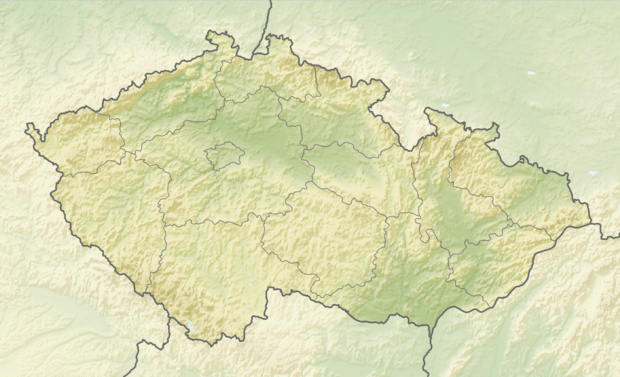Janov (Bruntál District)
Janov (German: Johannesthal) is one of the smallest towns in the Czech Republic and is situated in the western part of the Microregion Osoblažsko in the Petrovický stream valley, where the landscape steeply rises up to the ridges of Hrubý Jeseník. Currently, there are less than 300 inhabitants living in the town.
Janov | |
|---|---|
Town | |
Town hall | |
 Flag _CoA.svg.png) Coat of arms | |
| Etymology: John's (valley) | |
 Janov Location in the Czech Republic | |
| Coordinates: 50°14′37″N 17°28′33″E | |
| Country | Czech Republic |
| Region | Moravian-Silesian |
| District | Bruntál |
| Government | |
| • Mayor | Milan Kaloč |
| Area | |
| • Total | 11.01 km2 (4.25 sq mi) |
| Elevation | 410 m (1,350 ft) |
| Population (2019-01-01[1]) | |
| • Total | 293 |
| • Density | 27/km2 (69/sq mi) |
| Time zone | UTC+1 (CET) |
| • Summer (DST) | UTC+2 (CEST) |
| Postal code | 793 84 |
| Website | www |
History
The town was founded in 1251 by Bishop Bruno von Schauenburg and obtained its town rights in 1535 when it was assumed that there are rich deposits of precious metals around the town and its mining will bring prosperity and wealth. Although the assumptions were not met and there are no signs of precious metals mining around Janov, already granted privileges gave the town an urban character featured by a square which has preserved until these days.
Geography
The town is located deep in the Petrovický Stream valley where steep mountain ridges with forests and meadows rise up densely riddled with baulks. The natural environment of Janov includes a 500-year-old lime tree situated on the right side of Petrovický stream. Other points of interest is the Biskupská kupa viewing tower, located five kilometers away on the Czech-Polish border. Also nearby is the historical town of Zlaté Hory.
Arts and culture
The town has a small square at the town's centre where important monuments may be found, such as the Mining Memorial erected for the 650th anniversary of the town and the baroque statue of the Virgin Mary dated back to 1739. In the western corner of the square there is the Baroque-styled Church of the Holy Trinity built in between 1780 and 1783, with a cemetery located on the grounds. The cemetery includes two artistically valuable chapels built in pseudo-Renaissance and pseudo-Gothic styles. Also of note is the presence of folk architecture in the town, including houses No. 21 and 49. There is also the Museum of Janov and Jindřichov, a small museum which requires visitors make arrangements in advance by telephone, located on the town square which collects valuable geological artifacts about Janov, its history and life at the end of the nineteenth century.
References
- "Population of municipalities of the Czech republic". Czech Statistical Office. Retrieved 2019-04-30.
External links
- Wikimedia Commons: collection of pictures, video and audio files
- Municipal website
- Municipal Youtube Channel